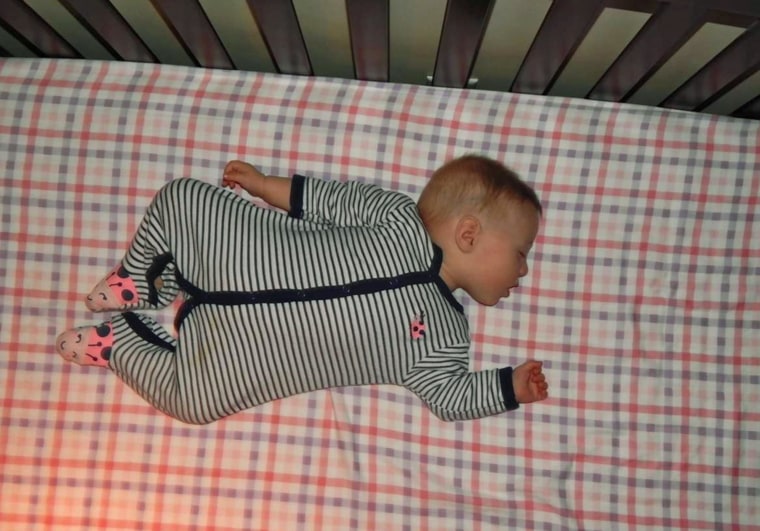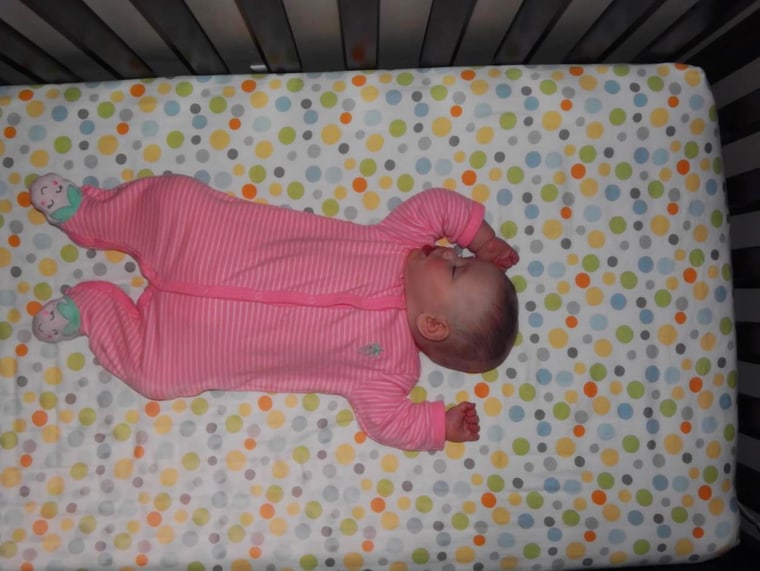A significant number of infants, especially those born prematurely, are still placed on their stomachs or sides to sleep — despite a campaign to reduce the risk of sudden infant death syndrome by placing babies on their backs, new research confirms.
The federal government, the American Academy of Pediatrics and child advocacy groups have urged parents for the last 20 years to place infants on their backs for sleep for the first year to reduce the risk of SIDS. But the new research found that nearly thirty percent of all infants do not sleep on their backs.
“This is very worrisome given the rate of SIDS, which has been stagnant over several years,” Dr. Sunah Hwang, the study’s lead author and a neonatologist at Boston Children’s Hospital and South Shore Hospital, told NBCNews. Hwang will present her work Saturday at a worldwide pediatrics conference in Vancouver.
SIDS is the label assigned to infant deaths that cannot be explained after an autopsy, a thorough examination of the scene, and a review of the baby’s medical history, and it remains the leading cause of death among infants between one month and one year of age. Just over 2,000 infants died of SIDS in the U.S. in 2010, the last year of available data.

Back sleeping increased dramatically after the “Back to Sleep” campaign was first introduced 20 years ago, from 13 percent of infants in 1992 to 72 percent in 2001, according to data from the National Infant Sleep Position Study. The incidence of SIDs was cut in half over that same period, from 120 deaths to 56 deaths per 100,000 live births.
But there has been little improvement in the SIDS rate since then, and little change in the share of infants who are put to sleep on their backs. Data from the National Infant Sleep Position Study shows 75 percent of infants being put on their backs for sleep in 2010. The research presented in Vancouver, using data from the state-based Pregnancy Risk Assessment Monitoring System, shows a 72 percent rate.
Studies have shown that parents are concerned about babies choking on spit-up. “I tell parents that their child has a normal airway and a normal nervous system, and so they have a mechanism to prevent the vomit from going into the lungs,” says Dr. Ari Brown, a pediatrician in Austin, Texas, and an official spokesperson for the American Academy of Pediatrics who has no connection to the latest study.
In addition, Brown and others say exhausted parents may risk tummy sleeping their infant because they are desperate for some uninterrupted sleep, and some babies sleep more soundly in that position.
“Maybe we need a celebrity to remind people why this is so important."
“At least 50 percent of my moms have admitted to tummy sleeping or side-sleeping their infants on occasion,” says infant massage therapist and doula Robin Rizzuto of New York City. “I repeatedly tell my clients that the American Academy of Pediatrics recommends ‘back to sleep’ for optimal infant safety, but you don’t know how hard it is to tell this to a weeping, sleep-deprived mom.”
Hwang says more disturbing still is the even lower rate of ‘back to sleep’ practices among preterm infants, those born before 37 weeks, “who actually have a higher risk of SIDS than other infants.” The average rate of back sleeping for all infants between 2000 and 2011 was about two-thirds, according to Hwang’s data, while for preterm infants it was as low as 60 percent.
“I was very surprised and somewhat disheartened,” says Hwang. That’s because many preterm babies spend as many as three or four months in the neonatal intensive care unit, or NICU, giving parents plenty of time to learn about safe sleep practices, she says.
Allison and Rob Massoud of Avon, Massachusetts, got the message though, through a two-hour discharge class and constant reminding from hospital staff. The Massouds are parents of 8- month-old twin girls Charlotte and Sophia, born roughly 12 weeks early, who spent 112 days in the hospital after birth under Dr. Hwang’s care.
When the girls first came home, they were swaddled and always on their backs, say their parents. “They can turn on their own now, but I’m still afraid to put them on their bellies even though Sophia might sleep better that way,” says Allison Massoud. “She moves around so much at night, while Charlotte sleeps just fine on her back.”

The Massouds followed what they were told and not what they saw in the NICU, where their girls were often on their sides or stomachs in the first few months because of bulky tubing delivering oxygen.
“When I walk into the NICU, many babies are sleeping on their stomachs, and they can do that because there are monitors and oxygen support,” says Brown. “But the baby may get used to sleeping in that position, and the parent may be used to seeing that,” says Brown, who was “stunned” by the low rate of preterm infants being put on their backs for sleep in Hwang’s study.
Brown and Hwang would like to see NICUs better model safe sleep practices by routinely putting preterm infants on their backs once they reach 34 weeks gestational age. And Hwang says more research is needed on how health practitioners can best communicate the safe sleep message to non-Hispanic black families, younger mothers, single mothers, less educated mothers, and those lacking health insurance, who, studies show, have lower rates of adhering to safe sleep guidelines.
“The teaching that doctors and nurses do and the messages from the health community may not effectively be reaching these underserved women,” says Hwang.
“Maybe we need a celebrity to remind people why this is so important,” says Brown.
